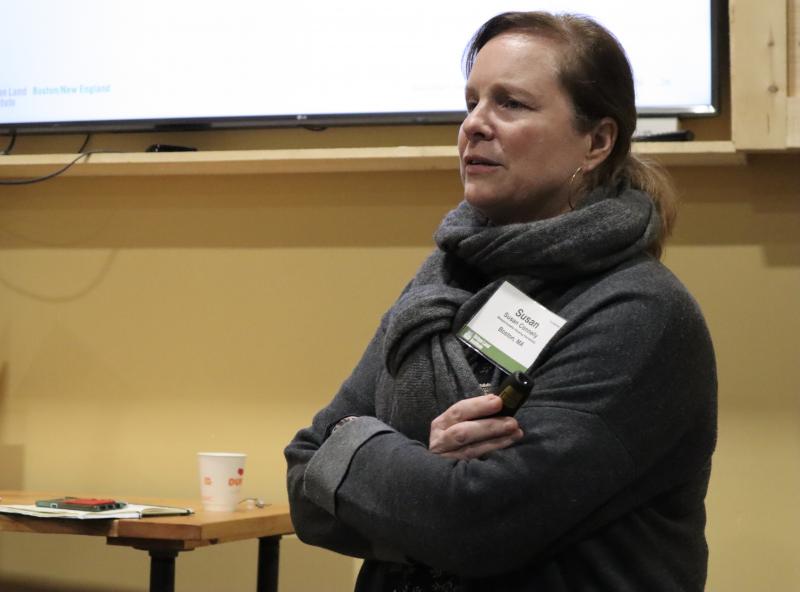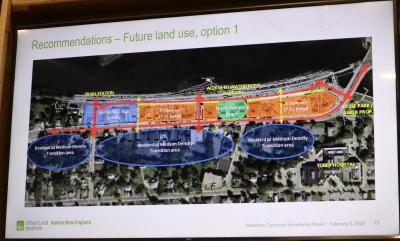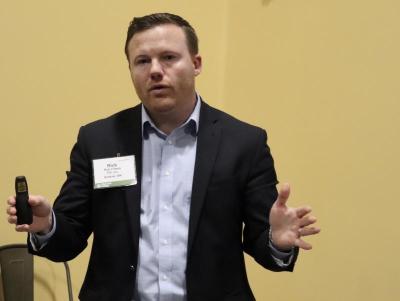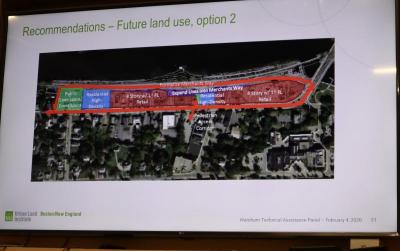Experts brainstorm possible improvements for Wareham Village
A panel of experts assembled by the Urban Land Institute spent the day of Feb. 4 observing Wareham Village, and presented some possible improvements for the area to an audience at Stone Path Malt later that night.
The Urban Land Institute recruits experts from fields such as engineering, architecture, and real-estate to study specific areas in towns and cities for “technical assistance panels,” which offer potential ideas to the municipalities based on their current assets and challenges.
In Wareham, panelists observed Main Street and Merchant’s Way, and considered how the area could be further developed to benefit the community. Panelists spoke with property and business owners in the area to gauge their needs before developing their plans.
Panelist James Heffernan, of Navem Partners, a real estate investment company, said that Wareham already has many assets, including the waterfront, Tobey Hospital, the proximity to multiple highways and Cape Cod, and the various restaurants downtown.
Some challenges in developing Wareham Village include the lack of sufficient lighting, the difficulty of coordinating plans with business owners, and a lack of entertainment venues and outdoor dining options.
The two main visions proposed by panelists for improving Wareham Village both centered around making better use of Merchant’s Way, but varied in their approach.
Architect Michael Wang advocated for an approach that would clean up and renovate the Merchant’s Way side of the village, and offer more access to stores and restaurants from Merchant’s Way. “The backs of the buildings can be equally as vibrant as the fronts,” he said.
He also called for more outdoor dining opportunities to give the area a more lively atmosphere.
Civil Engineer Rick Friberg had a similar idea, but he advocated for expanding the property lines of existing buildings farther back toward the train track, which could lead to higher property values, and increased building sizes over time. His plan would also include an open space that could be used for outdoor events.
Both plans recommended an increase in housing density in the neighborhood surrounding the area being studied.
According to panelist Susan Conway, having more people in the area would help contribute to the various businesses.
“In order to make small downtown areas economically viable and interesting, we have to increase the density of the people using them,” she said.
The presentation was purely informational, and no decisions regarding future developments were made.
To learn more about Urban Land Institute, or to read reports from previous panels, go to: https://boston.uli.org/.


















